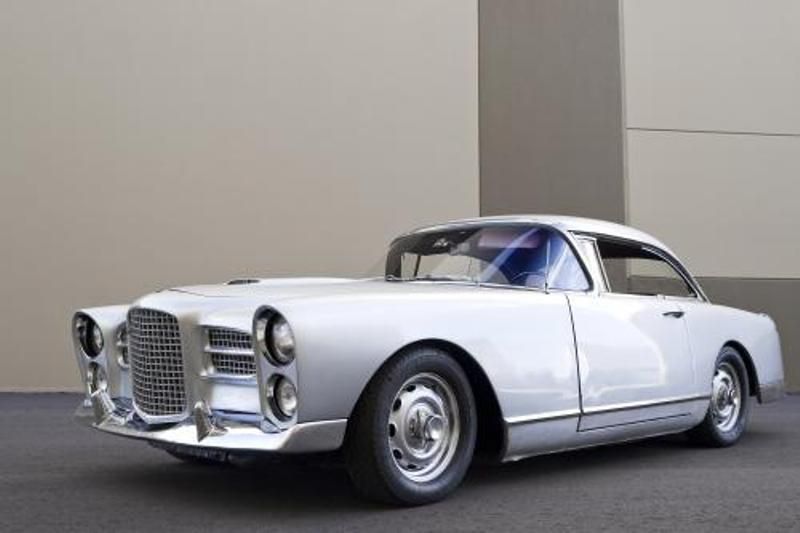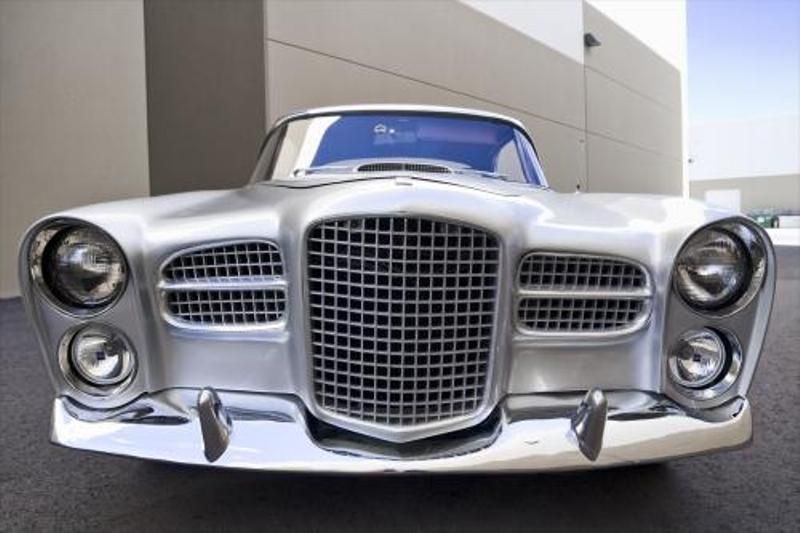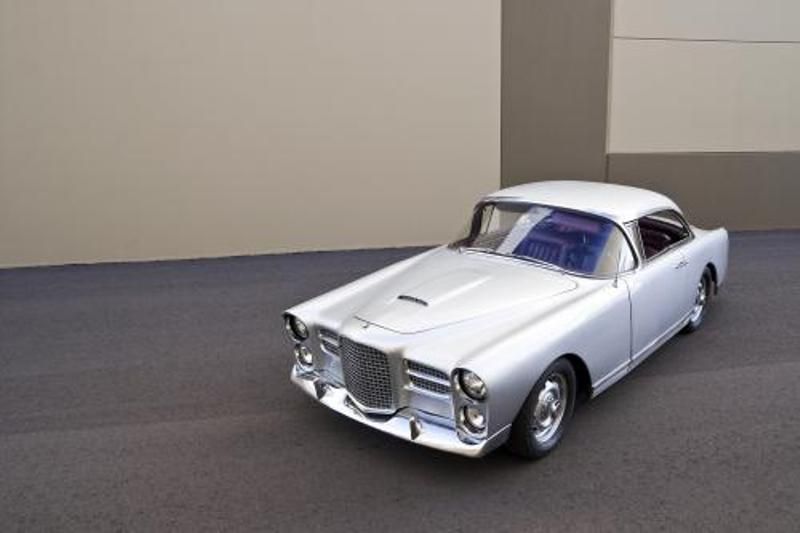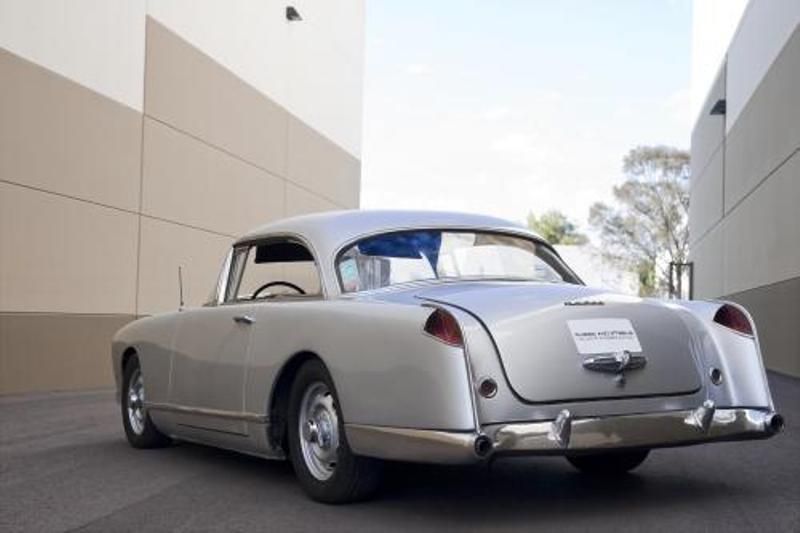Facel may be a brand that not a lot of today’s generation can recognize, but back in the 50’s and 60’s, it was one of the most successful enterprises in the world, responsible for making almost anything that’s under the sun. From scooters, office furniture, military vehicle bodies and combustion chambers for deHavilland and Rolls-Royce jet engines, it seemed like Facel had a hand in building everything his ingeniously creative mind could think of.
One of Jean Daninos’ biggest goals, however, was to build a car that would re-establish his native country of France’s foothold as one forefront GT markets in Europe. With an unyielding vision to succeed, not to mention a few breaks and good fortunes here and there, Daninos was able to use his company to make his goal a reality.
As with any other starting venture, Daninos initially had to weather a number of storms before getting his project off the ground and as soon as the clouds had dissipated, Daninos immediately went to work.
His first foray was a Facel-Bentley, which he created by putting a new coupe body on the 4.25-liter Bentley chassis just in time for the 1951 Paris Auto Show. Despite the car’s impressive showing at the Auto Show, which spurned Daninos to build six more vehicles with the same set-up as the original one, the man wasn’t content. So he decided to push for bigger and better things, and the result was the Facel Vega.
Daninos began outfitting the Vega with everything he could muster up. For starters, he put what was at that time the most powerful V8 engine on the Vega: the Chrysler Corporation Hemi in its 276-ci DeSoto version. For his chassis, Daninos used a rugged tubular affair with channel-and-box section reinforcements wrapped around the engine bay and rear axle. As for the transmission of his ride, Daninos used two set-ups; one was a French-made Pont-a-Mousson 4-speed manual while the other was a Chrysler automatic transmission, initially the 2-speed PowerFlite and after 1956, he upgraded it to a 3-speed TorqueFlite.
Meanwhile, the Vega’s suspension consisted of coil springs up front and a live axle on semi-elliptic leafs at the back. Steering was cam-and-roller, the hypoid final drive came from Salisbury, and slotted steel or Robergel wire wheels ventilated 11-inch-diameter aluminum drum brakes all-round.
Indeed, Daninos and the rest of the facel crew spared no expense in turning the Facel Vega into a car that became the toast of the town. But despite the rather successful venture – he sold all the cars he built, including 11 convertibles - Daninos still had his eyes set on creating a bigger and badder version of the Vega. With the money he made from the first Vega, coupled with a determination that would not be denied, Daninos started to work on his next project: a faster, more powerful version of the Facel Vega he called the HK500.
In line with the styles of the 60’s the Facel Vega HK500 took on a more modern look compared to its predecessors, even featuring stacked quad headlamps and a fully wrapped windshield with “dogleg” A-pillars. What has become a trend for Daninos of using Detroit-based engines continued with the HK500 when he once again put a 325-horsepower, 354-cubic-inch Chrysler V8 Hemi engine before upgrading it with a 383-cid wedge-head unit, with two four-barrel Carter carburetors that was rated at 360 horsepower.
With more power packed under the hood, the HK500 certainly lived up to the hard work Facel put into it by packing speeds of up to 140mph and achieving a 0-60 time of just under 8.5 seconds. Technical elements from previous Vega models also made their appearance on the HK500, including both the Pont-a-Mousson 4-speed manual, Chrysler 3-speed TorqueFlite automatic and Dunlop all-disc brakes.
While the car proved that it could shoot down the highway in blazing speed, there was still one major drawback to the car: it consumed so much fuel – only 14mpg - it felt like it was chugging it down like cold water on a hot, summer day.
Nevertheless, the car still proved to be an eye-catcher in every sense of the word and it became a car considered as a grand touring machine a comfortable, trapped in a lavishly equipped high-speed cruiser body.
The 1960 Facel Vega HK500 on display has undergone a number or restorative changes over the years. One of the most striking is the color of the vehicle. Initially painted in a Tudor grey accent with a red leather interior, the car has taken a shinier silver approach to enhance the car’s timeless appeal. As far as the engine of the car is concerned, this particular model retains its fondness for Chrysler by having a dual-quad 383ci Chrysler Wedge engine which is synched with a Pont-a-Mousson 4-speed manual transmission.
Stories of where this car came from have spurned a number of different versions with the most widely-accepted version being that this car was ordered at the Facel factory in France by an anonymous Mexican client who simply signed his name as ‘Ascarragas’ on the delivery paperwork that was dated October 13, 1960. Whether or not the man who goes by that name is still alive – he also once ordered another Facel Vega Excellence for the then-President of Mexico – is another matter of conjunction.
The most important thing is that this 1960 Facel Vega HK500 - one of only 540 HK500s – is one of the few remaining cars in the world that carries with the legacy of Jean Daninos, and anybody who claims to be a true car aficionado would know that owning this particular vehicle is tantamount to owning a piece of automotive history.




